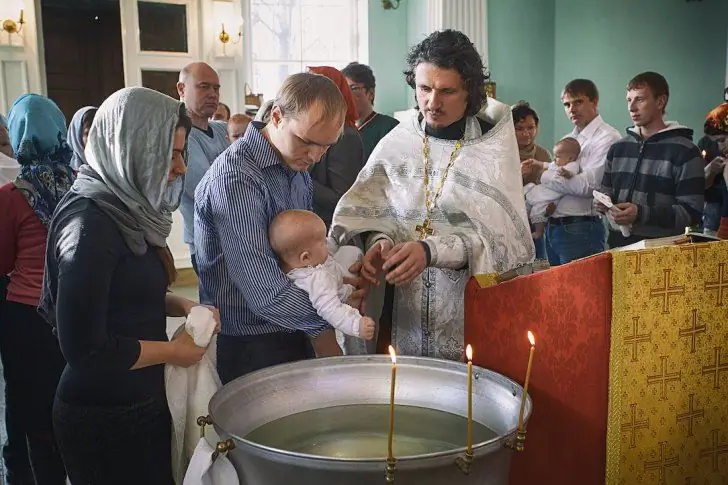2025 Author: Priscilla Miln | [email protected]. Last modified: 2025-01-22 17:55:13
In ancient times, it was customary to know your ancestors, honor their memory and remember the names of the grandfather and grandmother of your grandfather and grandmother. Today, often people do not even know what kind of relative they are to each other and what is the correct name for this family relationship.
Kinship history
Kinship is divided into blood, close and distant. Even 200 years ago, it was customary for blood relatives to live in the same yard. For this, a house was built for the son, where he brought his young wife, next to his father's shelter. It used to be that houses of the same family lined up along the street, and such a thing as great-nephews (these are the grandchildren of a sister or brother) was quite common for understanding the depth of kinship.

Kinship ties were so strong that mutual assistance was not considered something like a favor, but was natural for the survival and preservation of the family. With this approach, people knew not only their blood and relatives, but also distant relatives, such as fourth cousins and brothers, and even deeper.
Nowadays, parents and children can live in the same city and see each otherinfrequently. Blood ties are no longer supported by the common way of life, the survival of the family is not under threat, so the more distant relationship is no longer tracked. Thus, the spiritual family connection is lost. People who are related to each other are actually strangers to each other, and it is sometimes difficult to understand who belongs to whom.
Blood relation
Blood relationships are distributed by degree of relationship:
- The first degree of consanguinity concerns parents and children, as well as brothers and sisters. Blood brothers and sisters are those who have a common father and mother. Children who have a common father are considered half-blooded, and those who have a common mother, but different fathers are considered half-blooded.
- The second degree is determined between grandparents and their grandchildren. At this level of consanguinity, genetic features of appearance or diseases are transmitted, as well as from parents. Often grandchildren end up looking like their grandparents rather than their moms and dads.
- Third degree - great-grandfathers and great-grandmothers. These are the parents of grandparents for their grandchildren. Unfortunately, not all people live up to this honorary title. Due to the fact that family planning often comes after a career, it is possible to wait for children from grandchildren only with a he althy lifestyle or longevity embedded in the genes. Uncles, aunts and their nephews also belong to this category of family relationships. Brothers and sisters of parents are blood uncles and aunts for their children.

Blood distant relationship
Kthe category of relatives by blood includes all generations of lateral branches of the family tree. Having common ancestors at the beginning of the clan, these people are considered related, but distant.

- The fourth degree of consanguinity, but more distant relationship includes cousins and brothers, cousins grandfather and grandmother, as well as great-nephews - these are the grandchildren of siblings.
- The fifth degree of consanguinity, but distant relationship - great uncles, aunts and nephews.
- Sixth degree - second cousins and brothers. They are the children of the parents' cousins.
Further kinship is considered even more distant, so you can determine who belongs to whom only by digging into the pedigree.
Non-blood relatives
Each family where children grow up and marry acquires new relatives, which do not belong to the category of blood relatives, but are called in-laws. Each representative of in-laws has its own names of kinship, which are forgotten by many today.

Phrases like "husband's brother's wife's brother" sometimes make one wonder what they mean.
Actually, everything is very simple:
For the bride:
- husband's mother is mother-in-law;
- dad - father-in-law;
- husband's sister-in-law;
- brother brother-in-law;
- brother-in-law's wife - daughter-in-law;
- sister-in-law's husband is son-in-law.
2. For the groom:
- wife's mother is mother-in-law;
- wife's father-in-law;
- wife's sister -sister-in-law;
- wife's brother-in-law;
- brother-in-law's wife - daughter-in-law;
- sister-in-law's husband is son-in-law.

Brothers' wives are each other's brothers-in-law, and sisters' husbands are brothers-in-law. Thus, the phrase about the brother sounds in a new way - "the brother of the husband's daughter-in-law." All relatives of the bride or groom of the second and subsequent degrees are the same relatives as blood relatives, but in-laws.
Nephews
Nephews are blood relatives, and sometimes they replace their own children. So called the offspring of sisters and brothers. Between themselves, these children are cousins, they are also called cousins and cousins.
There have been cases when marriage unions arose between such close relatives, which were accompanied by the birth of children with genetic abnormalities. Many countries do not encourage marriage between cousins and brothers, but such unions are not subject to any persecution.
For nephews, the parents' siblings are aunts and uncles.
Grand-nephews
Such kinship as great-nephews is a deepening of the branch of the family from sisters and brothers. When a brother or sister has their own children grow up and get married, it gives a new branch to the family tree.
The more children in the family, the more beautiful and magnificent the generic "crown" will be, and the degree of kinship is determined solely by the depth of the "roots".
To understand, for example, who a great-nephew is, it is worth considering in detail the family life of a woman who has brothers andsisters. The children of a woman for her blood brothers or sisters are nephews. When they grow up, get married and have children themselves, these kids become grandchildren for a woman. For her brothers and sisters, a sister's grandson is a great-nephew. Thus, the entire depth of the clan will be called tribal - grandchildren, great-grandchildren, great-great-grandchildren, etc.
Genus Depth
The number of generations of children who are related by blood determines the depth of the family family tree. The crown, or branches of the family tree, are the families of these children. Sometimes it is difficult to keep track of all weddings, divorces, births and deaths, so in the old days it was customary for aristocratic families to keep their own family chronicles.

Nowadays, for most families it is not customary to enter names and dates of births into the chronological table, so the degree of relationship cannot be traced deeper than the third or fourth generation. When, for example, a child is born in a sister's family, some loving uncles and aunts ask themselves: "Who is my nephew's son"?
In fact, all children born on the part of nephews are called nephews. This may be a niece grandson or granddaughter, great grandson or great granddaughter, and further down the depth of birth. In turn, the nephew's uncle or aunt becomes nephew's grandparents.
A brother's grandson can make a pretty young aunt and uncle overnight grandparents. It often happens that the grandson (granddaughter) of a brother is of the same age or even older than the youngest child of his sister. Such children grow like the weather, andoften referred to as sisters and brothers.
Although they are not as close blood relatives as the offspring of their own children, nevertheless, great-nephews are still grandchildren.
Cousin Depth
Cousins and cousins of parents are great uncles and aunts to their children. Accordingly, the children of a cousin or cousin are called great nephews. A great nephew's child is called a great aunt.
This is a category of consanguinity, but distant relationship. For aristocrats, keeping track of all branches of the family is important in connection with the proof of aristocratic origin. Even 200 - 300 years ago they knew not only their main roots, but also their offshoots - families living in other cities and provinces. The same became applicable then to the merchants and we althy townspeople.

Families whose ancestors were their founders still live in the ancient cities of Europe. Usually the pedigree is traced from the father and passed on to the son. Therefore, the birth of an heir was so important for most royal and aristocratic families. If it was not there, then the family surname faded away and a new branch began with the surname of the married daughter.
In our time, such deep roots are no longer traced, and the inheritance is passed regardless of the sex of the child.
Recommended:
Who is the godfather of the father of the child: names, family ties, common misconceptions

Let's deal with a very sensitive topic. Who is the godfather of the blood father of the child? What are his tasks and obligations to the godson and his parents? What happens if the godfather does not fulfill these obligations? And what misconceptions are associated with godparents? Now let's talk in more detail about this topic
Family as a social group and social institution. The role of the family and family problems in society

Family is the most important social institution. Many specialists are concerned about this topic, so they are diligently engaged in its research. Further in the article we will consider this definition in more detail, we will find out the functions and goals set by the state in front of the "cell of society". The classification and characteristics of the main types will also be given below. Consider also the basic elements of the family and the role of the social group in society
Family. Family definition. Large family - definition

In our world, the definition of "family" in the life of every person is ambiguous. Of course, first of all, it is a great source of energy. And a person who tries to separate from it is most likely doomed to failure. In practice, no matter how tired our relatives are, if something happens, they will be the very first to come to the rescue, share your failures and help out if necessary
Who is who after the wedding? Family ties

Kinship relationships are a very interesting topic, which becomes especially relevant after the marriage ceremony. Who is the bride and groom after the wedding is an exciting and serious question, especially for newly-made relatives. In the old days, knowing your ancestors and all relatives, blood and not blood, was considered an honorable and important stage in the beginning of a life together
Prayer for the preservation of the family of the Blessed Virgin Mary. Whom to pray for the preservation of the family?

For every person on Earth, the most important object of everyday care is the family. It makes it possible to forget about pressing problems, is an outlet for any worker. Therefore, today, more than ever, prayer for the preservation of the family is popular. What is this prayer? When, how and to whom to pray for the preservation of your family?

